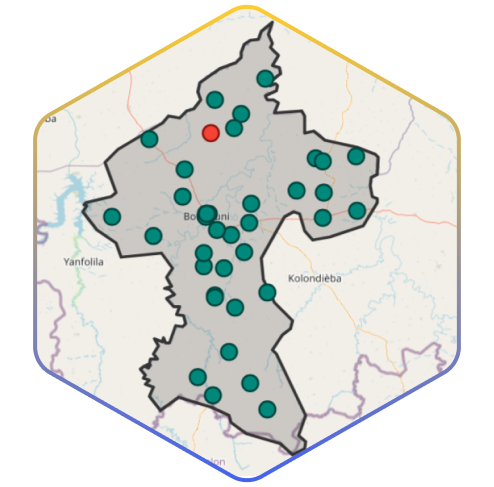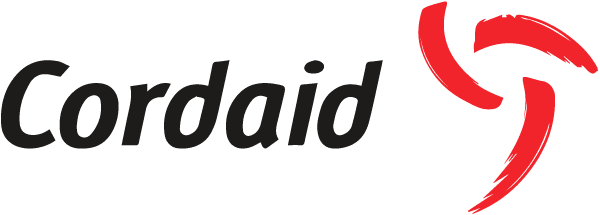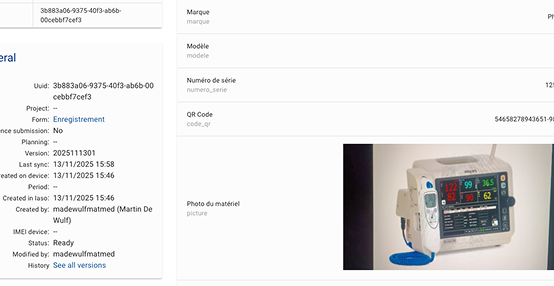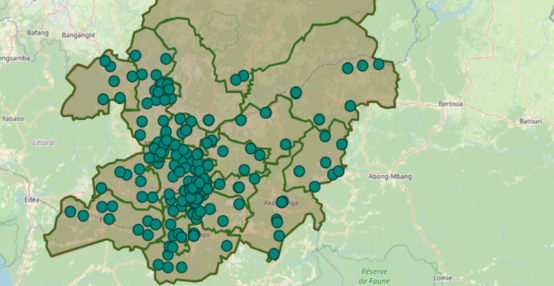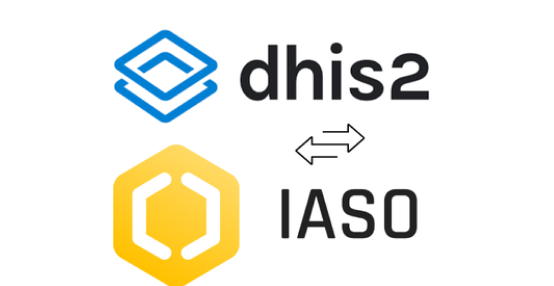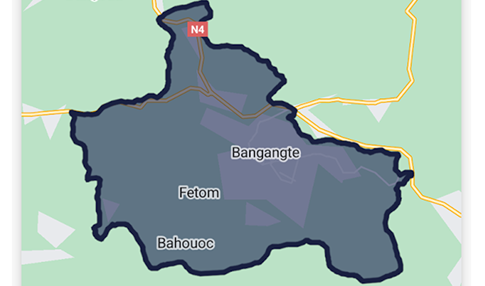A field-proven, geo-enabled data collection platform
At first, IASO originated as a georegistry tool, enabling data collection in remote places, backed by advanced geospatial features. Far from a standalone solution, it has always been integrated with DHIS2, the widely-spread health information system. Health facilities, service delivery points, villages, schools, and even households or individuals can be precisely located and core information collected about them.
That is why IASO today naturally enables geo-enabled microplanning — as laid out in the World Health Organization GIS Centre for Health’s Geo-enabled Microplanning Handbook. This is key to properly administer large-scale health programmes and allocate resources in the most efficient way possible. This way, programme managers can easily identify gaps in coverage, improve team assignments, and plan logistics with a high degree of precision.
IASO also supports the reuse of data from one campaign to another, may it be a mass campaign, routine or continuous. Microplans, field teams, geographies, and other resources can be retained, updated, and reused, saving valuable time and reducing the workload for central and field teams. This becomes especially important in the current context of increasingly scarce global health resources. This is for instance the case In Cameroon, where IASO is already used across multiple campaign types, including immunization (polio, measles, yellow fever, malaria vaccine, etc.), malaria bed net distribution, and seasonal malaria chemoprevention (SMC), and hence across departments (EPI, NMCP, Nutrition programmes, etc.).
This is made possible thanks to IASO’s project-based architecture. This allows institutions (for instance, EPI, NMCP, Nutrition programmes, and others) to manage multiple data collection activities — such as different health campaigns, surveys, or routine monitoring — independently, within the same system – in other words, it enables integrated campaigns. Each project can be customized with its own forms, workflows, and datasets, while sharing necessary data as needed across them.
A major advantage of IASO is its configurability and accessibility. The platform was built so that non-technical users can set up and manage their projects without needing highly technical profiles such as software developers. Data collection forms, geographic data, user management, entities can all be defined through an intuitive interface, empowering health teams and promoting long-term ownership of the platform.
In addition, IASO is open-source and ready for local hosting. Institutions can deploy and maintain the platform on their own infrastructure if needed, ensuring full control over data and system access. Beyond the technical stack, IASO is committed to fostering a community of practice — bringing together health professionals, digital teams, and partners who want to share experiences, improve tools, and shape the future of campaign digitalization collaboratively.
Lastly, IASO is a solution built following a bottom-up approach. Every feature is the result of practical needs expressed by health workers, data managers, and program leads across 6 years of deployments. This development approach ensures that IASO remains grounded in the realities of campaign operations and continues to evolve in step with user needs.
How health campaigns are digitalized with IASO
IASO supports every stage of campaign digitalization — from geographic data preparation (macro and microplanning) to field execution and post-campaign analysis. Below is a typical workflow that reflects how teams use the platform in practice:
1. Import the most accurate geographic data source(s)
Campaign planning begins with a solid geographic foundation. IASO enables the import of data from multiple sources, including DHIS2, GeoPackage, GeoJSON, and CSV files, and others. Multiple geographic datasets can coexist in the system, making it possible to compare sources and select the most accurate versions, and merge them into the final version as needed.
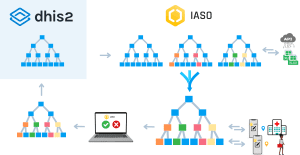
2. Collect field data for detailed microplanning
To refine microplans, field teams use the IASO mobile application to collect data from the most remote areas. This includes verifying facility locations, updating catchment area boundaries, and — in the case of campaigns like malaria bed net distributions — identifying individual households and collecting information on population needs. All collected data feeds into the national-level microplanning process, enabling accurate aggregation and resource allocation.
The data collection is based on XLS data collection forms, making it very easy to configure by non technical teams and to adjust without technical assistance.
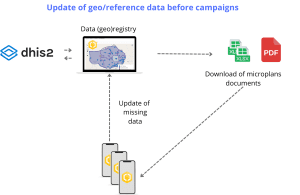
3. Validate microplans and organize campaign operations
Once microplans are compiled and validated, campaign logistics can be launched. IASO provides the central-level visibility needed to assign teams, allocate supplies, and schedule activities efficiently. The platform ensures that every element of the campaign is aligned with geographic reality and operational capacity.
4. Monitor campaign progress in real time
During the campaign, IASO enables real-time reporting. Mobile and web interfaces allow teams to track performance, coverage, and key indicators live. Central teams can visualize progress on interactive dashboards, identify underperforming areas, and respond quickly to emerging challenges — ensuring better coordination and fewer surprises.
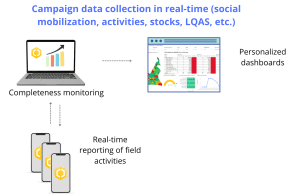
5. Evaluate campaign performance and share results
After the campaign, IASO continues to support monitoring and evaluation. Tools like LQAS and independent monitoring surveys can be configured within the platform. Collected data is aggregated and visualized, helping program managers assess performance, generate reports, and guide strategic decisions. Where needed, campaign data can be pushed back to DHIS2 or exported to other systems.
6. Reuse and adapt data for future campaigns
IASO acts as a centralized, reusable repository for campaign planning and execution. Its modular structure supports mass, routine, and continuous distribution campaigns alike — from polio and measles immunization to SMC and nutrition interventions. The ability to reuse microplans, household data, field teams, and geographic entities makes future campaigns faster to prepare and more consistent over time.
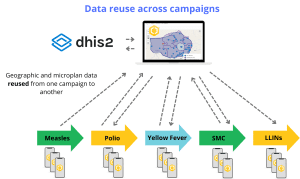
As a conclusion, IASO is more than a data platform — it’s a flexible, field-tested tool for health campaign digitalization. Over time, and through more than 25 projects across multiple countries, it has evolved into a comprehensive solution that supports every stage of health campaign implementation.

